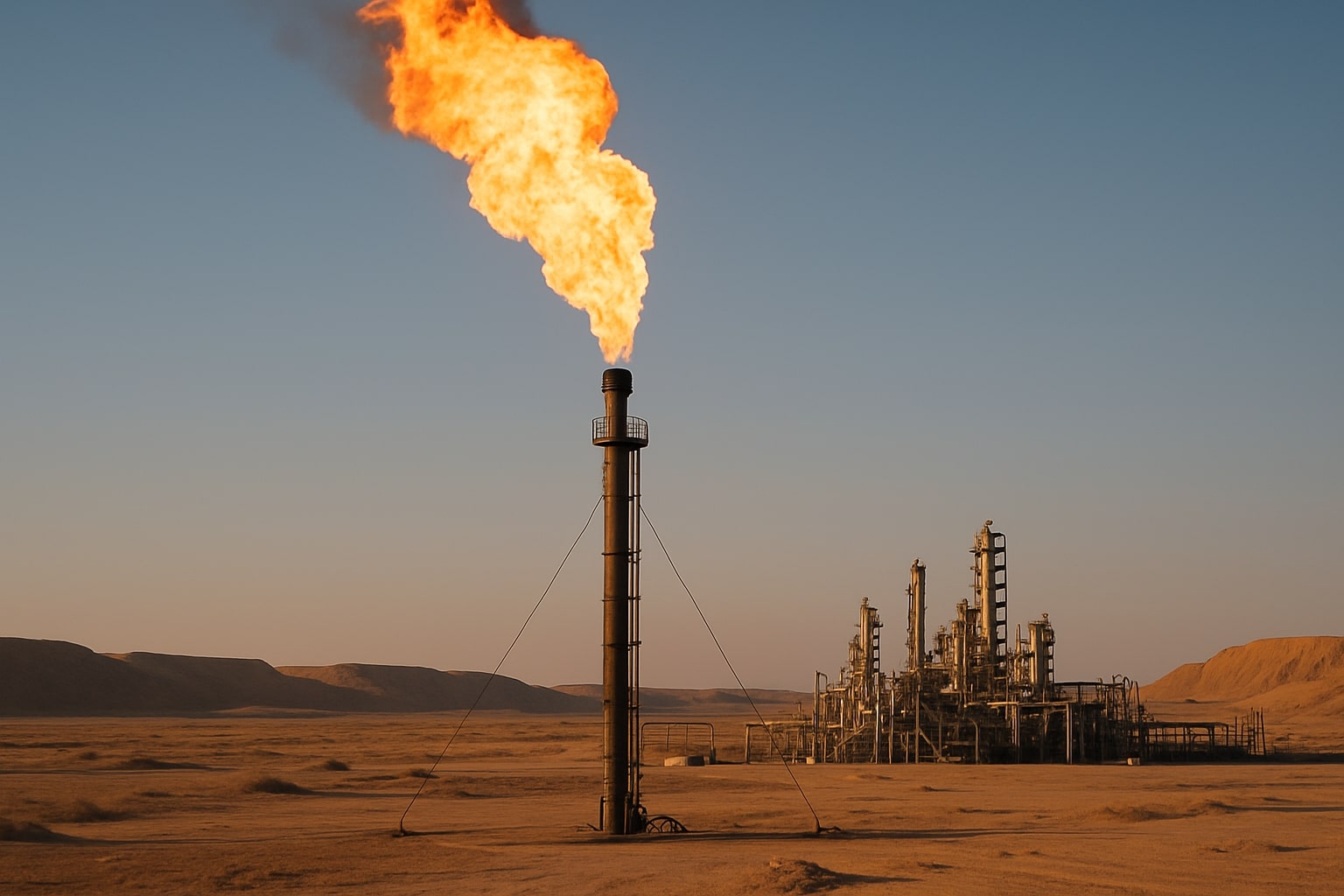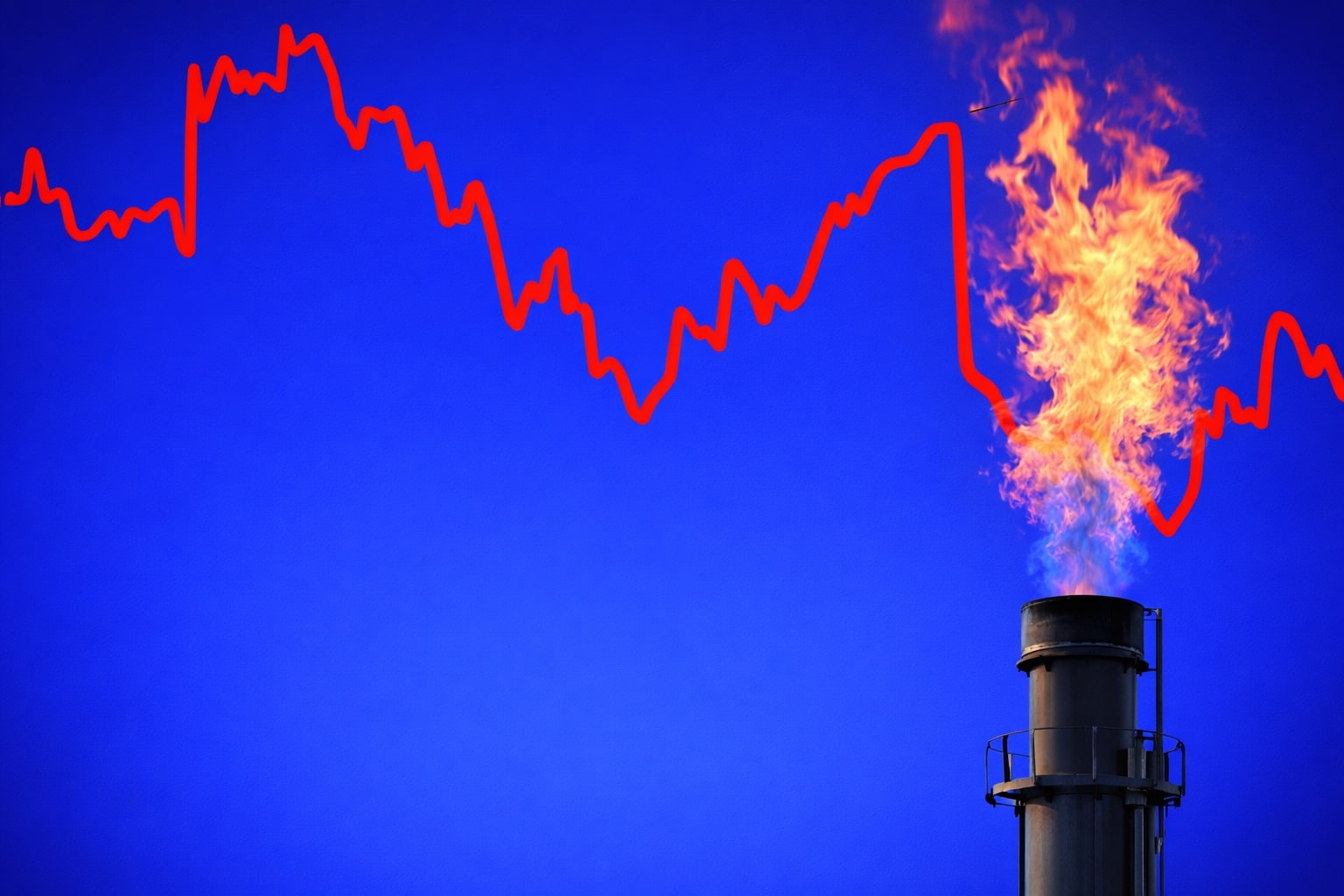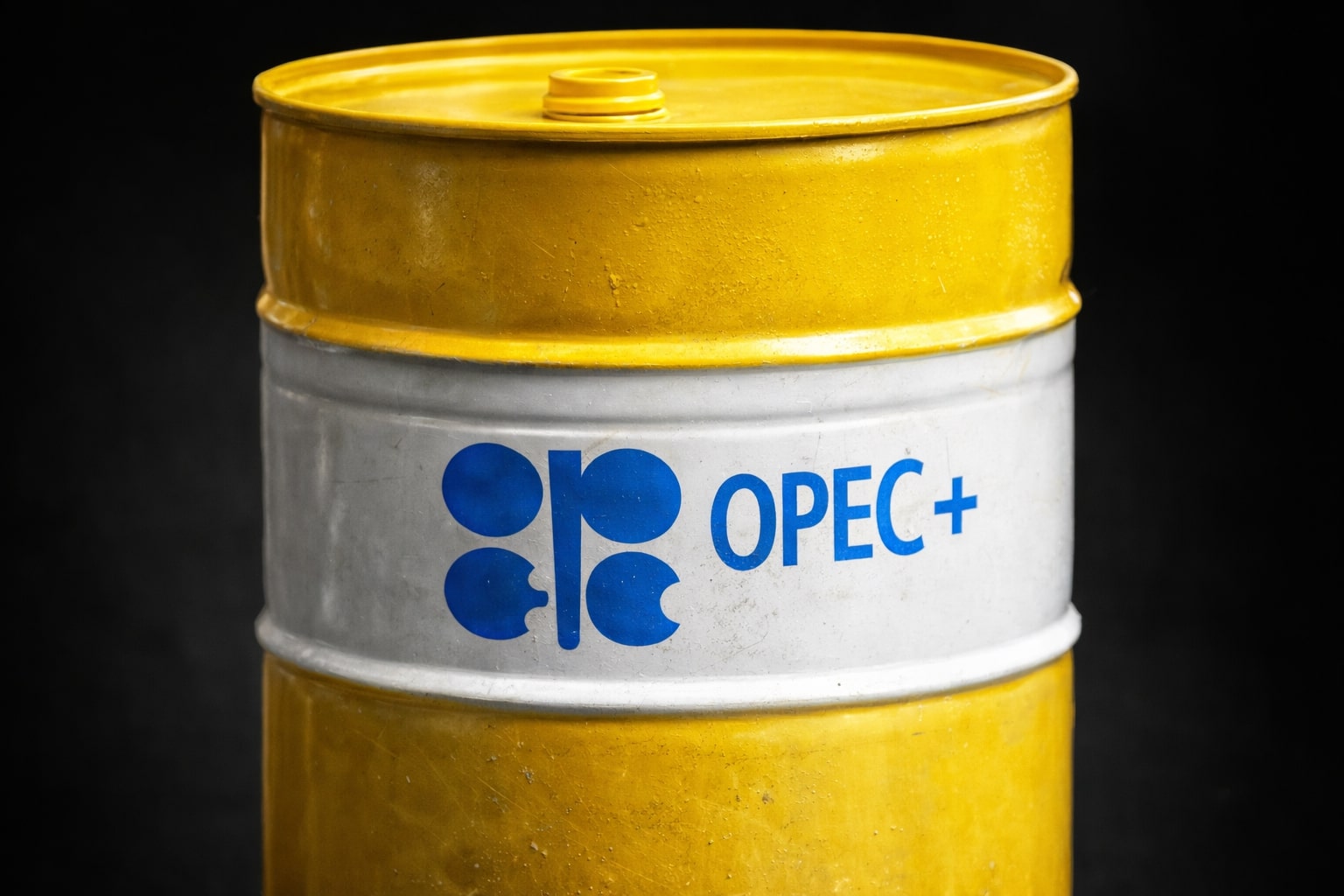
Natural Gas (NG=F) Price Faces Bearish Pressure Amid Cooling Demand and Storage Glut
With LNG exports steady but rig counts falling, NG=F charts hint at a breakdown toward $3.00 unless heat returns or geopolitical supply shocks hit | That's TradingNEWS
Natural Gas (NG=F) Faces Multi-Directional Pressure as Heatwave Demand Fades and Storage Surplus Builds
Market Balance Shifts as Heat Eases and Storage Exceeds Historical Norms
Natural gas futures (NG=F) are showing signs of fatigue after recent rallies, with front-month August contracts dipping 2.26% to $3.42/MMBtu as of July 3. The latest EIA report confirms an injection of 55 bcf for the week ending June 27, above market expectations of 49 bcf but still under the 5-year average of 61 bcf. Total inventories now stand at 6.2% above the 5-year seasonal norm, although still 5.8% below last year. Traders responded swiftly with profit-taking, reversing earlier gains of 2.5% during the session. This reaction underscores growing anxiety about oversupply colliding with weakening demand amid a seasonal cooling of U.S. weather.
Temperature Forecasts Turn Mixed; Electricity Demand Retreats
Heatwaves across the U.S. Northeast and Midwest initially fueled power generation demand, pushing electricity output up 3.2% YoY to 99,357 GWh in the week ending June 28. However, NOAA forecasts now project a return to more moderate conditions for the July 8–17 window. Vaisala expects average to below-average temperatures in the Midwest and East Coast, cooling expectations for sustained natural gas burn in utilities. In Europe, a similar pattern is playing out: scorching heat in Spain and Croatia is offset by storms and cooler weather across Northern and Eastern Europe. The net effect is declining power sector demand just as supply remains robust.
LNG Export Volume Remains Strong But Faces Global Risk Overhangs
U.S. LNG flows remain healthy at 15.0 bcf/day, just below all-time highs, even as facilities like Sabine Pass resume post-maintenance operations. However, geopolitical risks are rising. The Strait of Hormuz saw Iranian naval mine deployments, raising the specter of LNG supply disruption. About 20% of global LNG transits through this corridor. Ripple effects could lift international benchmarks: TTF rose to $12.95/MMBtu and East Asia LNG futures surged to $13.94/MMBtu. Golden Pass LNG, a joint venture between Exxon Mobil and QatarEnergy, has requested permission to re-export LNG starting October 1, with cooling operations underway—a sign of near-term export growth.
Production Holds Firm as Rig Counts Erode and Contango Expands
Lower-48 dry gas production remains elevated at 107.4 bcf/day, a 3.3% YoY increase, despite a notable 5.9% YoY drop in total oil and gas rigs to 555. Natural gas rigs dipped to 108, down from the recent 15-month high of 114. This declining rig count creates long-term uncertainty around supply sustainability, particularly if weather-driven demand spikes again. Meanwhile, the futures curve shows deep contango—August prices trading far below winter contracts—a sign of oversupply pressure and bearish sentiment. Traders are cautious, with many fading rallies and treating strength as a sell opportunity.
Regional Storage Disparity Masks Underlying Vulnerability
Despite a national surplus, storage imbalances exist. The Mountain region sits 30% above its five-year average, while the Midwest and East trail last year’s levels. This uneven refill distribution could create regional tightness, particularly if cooling demand surges unexpectedly. EIA projections suggest end-of-season storage could hit 3,932 Bcf—well above the five-year norm—but that outcome depends heavily on subdued demand and mild weather continuing.
Short-Term Technicals Signal Potential Breakdown Toward $3.00
Natural gas prices are testing critical technical levels. The 50-day and 200-day EMAs are converging, with recent price action flirting below the 200-day line. A breakdown here could target the $3.00 zone, especially if cooling trends persist and storage builds remain strong. Volumes on recent down days have been higher than on up days, confirming a shift in sentiment. RSI has rolled over, momentum is waning, and MACD suggests bearish continuation.
Investor Positioning Turns Defensive; ETFs and Exporters Diverge
Investor flows are rotating cautiously. Natural gas ETFs like UNG have seen outflows as traders hedge against downside risk. LNG-export-centric equities such as Cheniere Energy (LNG) and NextDecade (NEXT) remain supported by global pricing spreads, but face headline risks tied to Middle Eastern tensions and global demand pullbacks. Midstream names like Kinder Morgan (KMI) and Enable Midstream (ENBL) offer steadier exposure as storage tightens in some regions. Pure-play producers, especially unhedged ones, remain high beta and vulnerable to volatility swings.
BUY/SELL/HOLD VERDICT: SHORT-TERM SELL — LONG-TERM NEUTRAL
Natural gas (NG=F) is under pressure from rising production, weakening seasonal demand, a bearish storage backdrop, and deteriorating technicals. Near-term, prices face resistance at $3.50 and risk falling to $3.00 or lower. While long-term fundamentals like LNG capacity expansion and declining rig counts may support structural tightening, the short-term view skews bearish. Unless weather shifts dramatically hotter or geopolitical risk flares into a supply disruption, natural gas is likely to trade sideways or lower.
Rating: SELL (Short-Term)
Downside Risk: $3.00
Resistance Ceiling: $3.50
Long-Term Outlook: HOLD pending Q3 weather trends and export growth stability
That's TradingNEWS
Read More
-
SPYI ETF at $52.59: 11.7% Yield, 94% ROC and Near S&P 500 Returns
04.01.2026 · TradingNEWS ArchiveStocks
-
XRPI and XRPR Rally as XRP-USD Defends $2.00 on $1.2B XRP ETF Inflows
04.01.2026 · TradingNEWS ArchiveCrypto
-
Natural Gas Price Forecast: NG=F Eyes $4.30 if Storage Draws Tighten
04.01.2026 · TradingNEWS ArchiveCommodities
-
USD/JPY Price Forecast - USDJPY=X at 156.91: 157.75 Breakout Sets 160 Target as Fed Jobs Week Tests The Dollar
04.01.2026 · TradingNEWS ArchiveForex



















